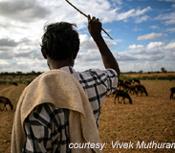Developing global maps of the dominant anopheles vectors of human malaria
Despite advances in mapping the geographical distribution and intensity of malaria transmission, the ability to provide strategic, evidence-based advice for malaria control programmes remains constrained by the lack of range maps of the dominant Anopheles vectors of human malaria. This is because appropriate vector control depends on knowing both the distribution and epidemiological significance of Anopheles vectors. Substantial investments by major donors in the distribution of long-lasting insecticide-treated nets and indoor residual spraying campaigns are, therefore, not always fully informed by the basic biology of local anophelines.







